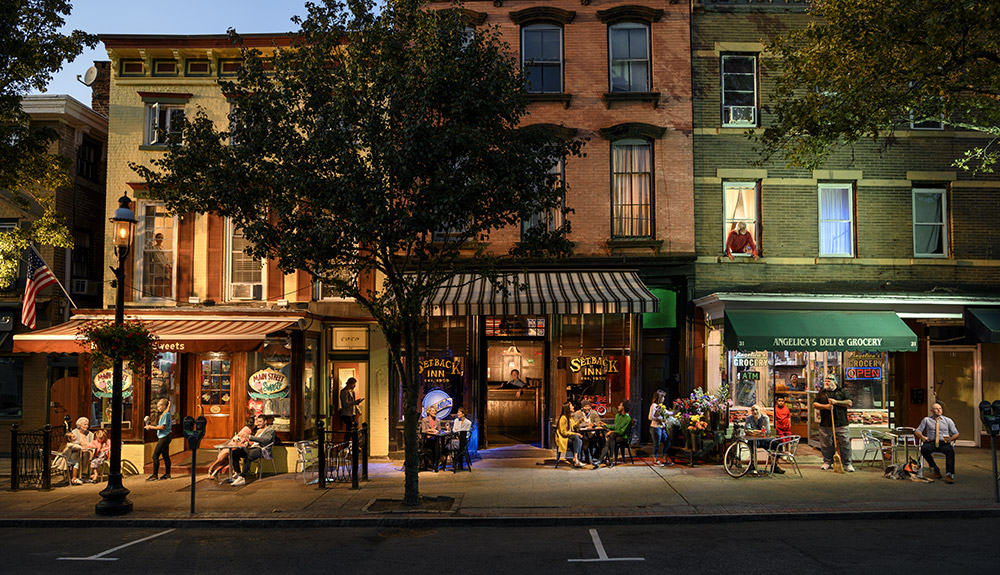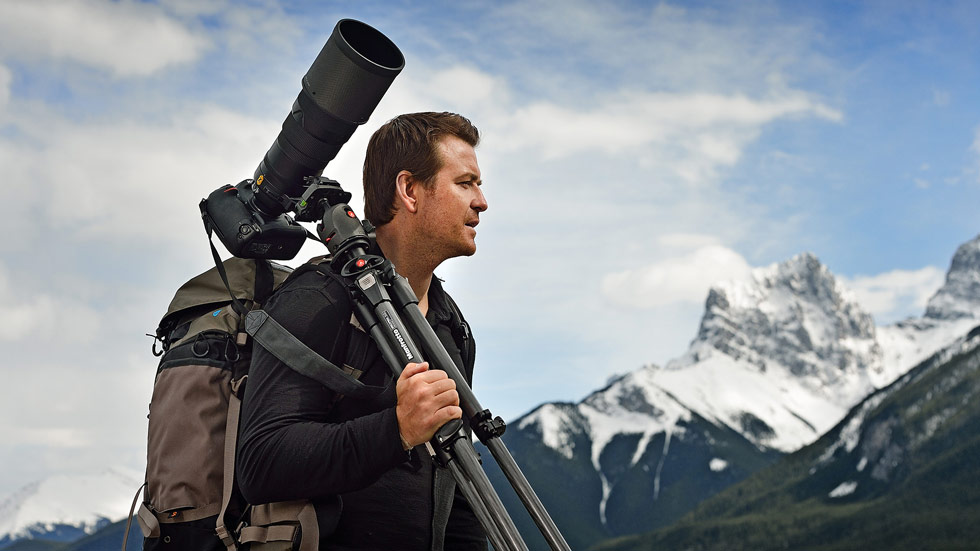One Shot: Commercial Street
Joe McNally lights and photographs an idyllic street scene
The Specs: D850, AF-S NIKKOR 24-70mm f/2.8G ED, 1/250 second, f/8, ISO 200, manual exposure, Matrix metering and mix of radio- controlled wireless SB-5000 and line-of-sight wireless SB-910 Speedlights, totaling 32 units.
It was picture perfect: Main Street in the village of Tarrytown, New York, on a summer night in August with local folks out doing whatever local folks do on a summer night in Tarrytown, and wouldn't you know it—a photographer who happened to be out and about caught it in all its Norman Rockwell glory.
Uh, no...that's not what happened.
What you're seeing is a completely staged and choreographed commercial image, remarkable in conception and execution, one that required excruciatingly detailed planning and preparation...and a bit of good luck.
It's a picture we'd admire and appreciate even if we weren't partly responsible for it—Nikon sort of issued the challenge that led to its creation, and we make the Speedlights that are everywhere (but nowhere to be seen) in the picture.
The photographer was Nikon Ambassador Joe McNally, who loves to create imaginative and often unexpected big-production images.
"in this case Nikon wanted to emphasize the versatility and flexibility of their wireless Speedlights," Joe says, "and they looked to me to conjure an idea." His first point of reference for this idea was a photo he'd taken years ago—a street scene with multiple flashes, taken on a corner in New York City. Joe's idea was to "up the ante a bit"—from a corner to a whole block, and part of that inspiration came from a legendary photograph taken by Langdon Clay in 1979: 22 images shot on a stretch of 42nd Street in New York City with an 8x10 camera, the negatives later combined to make a 25-foot-long print.
"I've always loved pictures like that," Joe says. "Remember Rear Window? As the camera pans from window to window, there's different drama and activity and gesture in each, and here I'd be orchestrating all that action."
The cast features McNally studio alumni. "Almost all are models who'd worked with us before," Joe says, "and we also used some local people—up in the window is Phil, who lives in Tarrytown; the guy with the broom and bandanna is our crew chief's father; the guy in the middle sitting at the bar is a New York City actor. It was kind of a down-home project."
Getting the project from idea to image took a massive effort, and the magic act was performed by Lynne, Joe's long-time studio manager/producer. "Police permits, traffic redirected, commercial releases on all the buildings, on-duty police officers to direct traffic—that's the main street of Tarrytown—and permission from the town board and permission from any other business within 100 feet so those shopkeepers would know what was going on. It's enormously complicated to pull off a commercial picture in an environment like this. Most people cannot imagine the depth of detail you have to go into."
The picture was made just before 7:00 p.m. "We were right on the edge of dusk—there's color in the sky, a little bit of fading sunlight you can see in the upper left," Joe says, and that's where the bit of good luck came in. "I desperately needed that light because as soon as the sky goes black, you kinda lose all the charm."
The crew started setting up about 10:00 a.m., placing the Speedlights according to indications on a laminated print of the scene made prior to the shoot. "It's a map of the location setups of the lights, [but] there were considerable adjustments. Some of the notes on that lamination were drawn on location the morning of the shoot. I was sitting in the setback inn and kind of thinking my way into it."
The shoot itself was a series of shots and adjustments. "You can't really see the expression of your flashes when it's full sun," Joie says, "so you're making a lot of educated guesses where the lights will go and how they will play. Luckily, I've been doing this kind of thing a fairly long time, and we had a great crew, and we kept just fluidly moving lights and adjusting. In terms of the real hardcore prime-time of the photo, I probably shot no more than 50 to 80 honest-to-goodness frames that could be used over a period of about an hour."
Which led Joe back to the role of his producer. "Lynne does an incredible job, which allows me to concentrate on what I need to concentrate on. Her sense of organization is much stronger than mine...and we do what we're good at, right?"
Indeed we do.




